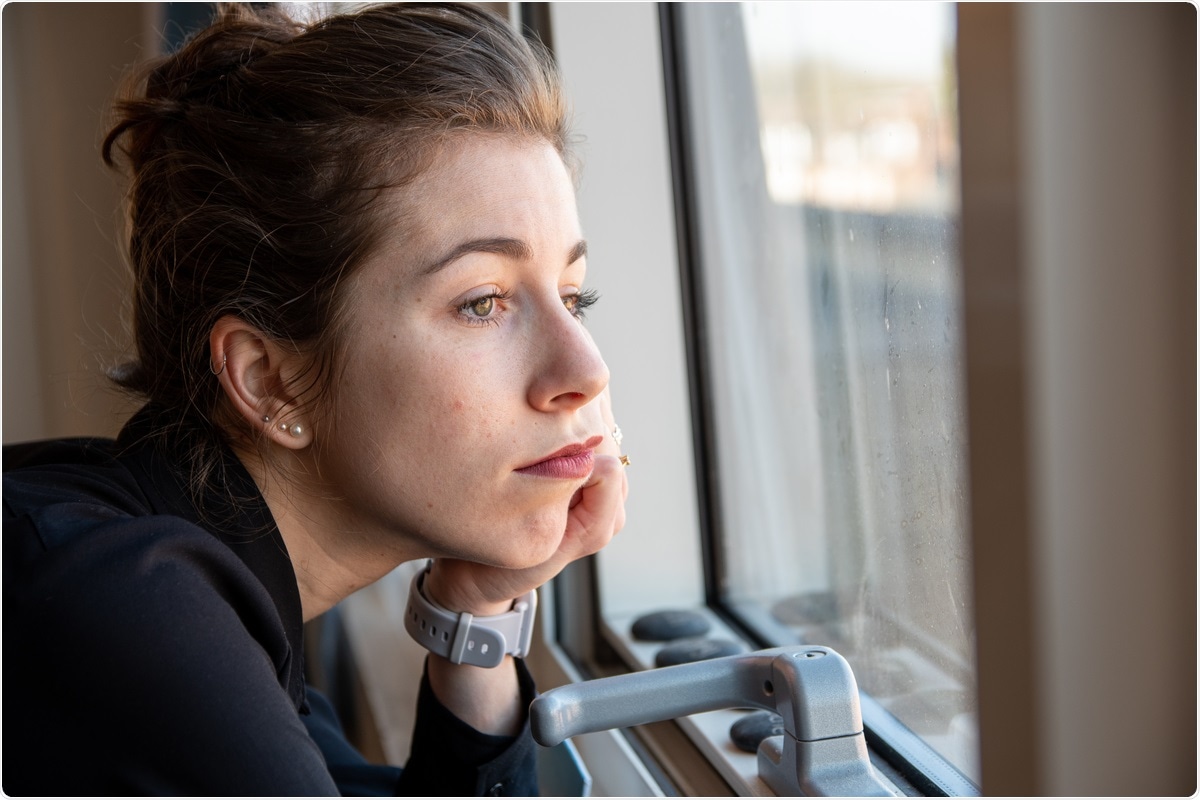Small negative lifestyle changes during COVID-19 lockdown could accumulate, say researchers
An interesting new study by researchers in Australia, which has been published in the journal PLOS ONE, suggests that lifestyle changes due to pandemic restrictions on outdoor mobility have been small. But they warn that these may accumulate over time.
The coronavirus disease 2019 (COVID-19) pandemic, caused by the rapid and extensive spread of the severe acute respiratory syndrome coronavirus 2 (SARS-CoV-2), has brought about severe and long-lasting restrictions on mobility outside one’s home. It has also caused some degree of reduced access to various services, including the provision of healthcare and food, and a loss of direct social interactions.
All these have led to a distinct change in the way people spend their time, possibly the most dominant experience among affected people.

Earlier surveys
Multiple surveys have already been carried out to study the change in physical activity related to the lockdown. Some have shown large and increasing reductions in this area from the beginning of lockdown, proportional to the duration and severity of the lockdown measures.
These have relied on measures such as step counts, or the activity monitor Fitbit, and other wearables. The reduction was apparently global, but was higher among younger adults, and in children.
Changes in sleep patterns have also occurred, with longer and deeper sleep being reported by some studies. Other researchers report the opposite, such as more and unfriendly dreams and more low-quality sleep, especially among younger adults. Insomnia was also found to be on the rise in one Chinese study.
Screen time has undergone enormous expansions among children. Some of this is due to online education, but by all reports, most of the extra online time is spent on entertainment apps. Adults are not exempted, with one Canadian study showing an increase in screen time for 87%, 74% and 61% of children, mothers and fathers, respectively, during this time.
Food intake has also experienced changes, such as increased cooking, less takeout, and more time spent cooking. Overall consumption was increased in one study. Alcohol intake also went up in one study, despite self-reported decreases in consumption.
Weight changes have also occurred, as expected, from less exercise and physical activity, higher screen time and reduced diet quality. The mean change differs between studies, with reports of weight gain from 80 grams per month to about 2.5 kg over the whole of lockdown.
Mental health trends during the lockdown are also variable, doubling or trebling of the rate of depressive and anxiety symptoms, especially in younger adults and in those with pre-existing mental health issues. In the latter group, as many as 80% claimed a worsening of their mental wellbeing with the coming of the pandemic.
Despite the availability of such results, many of them are based on self-reported data or the analysis of big data.
Tracking activity and wellbeing before and during a lockdown
The current study aimed to use data from a group of people individually tracked before and during lockdown periods in the city of Adelaide, Australia.
The cohort of people came from the prospective study “Annual Rhythms In Adults’ lifestyle and health” (ARIA), an ongoing study of activity, diet, weight and wellbeing over 13 months. The sample included 61 healthy adults between September and November 2020.
The participants had been invited from a separate study, “Life on Holidays,” and were all parents or guardians of children, taking survey data from timepoints 3 and 4. These timepoints dealt with behavior and experiences before and after the strictest lockdowns in Australia.
During the lockdown period of the study, most public centers for eating, cinemas and playgrounds were closed. Gatherings were not permitted at home or in public. Some schools were also closed, and work-from-home was promoted. Many shops were also closed, either mandatorily or voluntarily.
The data came from Fitbit results collected for 14 days each time, using Fitbit Charge 3 activity monitors worn the whole day except in water or for charging. These measure moderate-to-vigorous physical activity (MVPA), sleep and energy expended each day, on a minute-to-minute basis.
Most participants were female, born in Australia, overweight, married and well-educated, thus making the study representative of middle-aged Australian adults, but with large female over-representation. Forming the entire cohort, parents were also over-represented, as were employed persons.
What were the results?
The data showed an increase in sleep by about 30 minutes a day. Total sleep duration remained within healthy limits. Waking times were later, perhaps because of the absence of commuting time for both children and adults.
There were about 20 minutes more of sedentary time a day. However, there was also a 50-minute reduction in light physical activity, perhaps because of less work-related physical activity at home or reduced active transport.
There was a selective increase in cycling but not swimming, sailing, team sports and boating. The cycling may have taken place as a means of getting to work other than by public transport. Overall, MVPA remained the same before and during the strictest lockdown period.
The physical activity changes due to exercise are small and were affected by the fact that over 80% and 90% of people at either timepoints participated in some form of exercise.
“These changes in daily activities from pre- to during COVID-19 lockdown appear to mirror the differences in daily activities typically seen on weekday and weekend days.” The researchers also compared this to the change occurring with retirement.
Energy intake remained unchanged, but more energy came from alcohol during the lockdown and less from protein, albeit slightly. The level of increase was less than half a glass of wine. Weight changes were minimal.
Mental health suffered surprisingly little, in contrast with most scientific predictions of an impending mental health pandemic, as well as studies that show high levels of distress during this period. This discrepancy could arise from selection bias, leading to different study populations in this study vs earlier studies.
What are the implications?
This is the earliest study that measures multiple lifestyle activities, including physical activity, time spent inactive, sleep and diet, along with weight and psychological wellbeing during the pandemic. This was made possible by the fact that the collection phase was already underway from the latter part of 2019 onwards.
The data was collected longitudinally, within the same cohort, using high-quality methods. This ensured the availability of reliable comparison data, which is not the case with most earlier studies in this area. These mostly used retrospective comparisons of lifestyle and mental health data, increasing the risk of selection and recall bias.
The small overall changes are generally in a negative direction. This may point to the fact that when such changes occur in tandem but are sustained, the overall impact may be harmful over time. The likelihood that COVID-19-related restrictions will last for a long period is realistically high, and as such, these may significantly affect population health.
While people with heightened mental health symptoms volunteer for surveys on COVID-19 and mental health, our participants tended to have relatively good mental health.”
Interestingly, national surveys in the US and the UK also showed higher rates of depression and mental distress during this period. The difference here could be due to the lower impact of COVID-19 on Australia at this time compared to other countries, with a much lower risk of infection and severe illness and of having friends or family that are seriously sick.
Lockdown measures were also relatively lenient in Adelaide compared to the UK and to many US states, where sheltering in place meant increased isolation at the social level. Moreover, the period of time assessed in this study was short, and with increasingly longer periods, a greater impact is likely.
Finally, the participants here were somewhat more financially secure, with a higher educational background, than others, which may have skewed the mental wellbeing results. The middle-aged demographic could also mean that the lockdown-associated slowdown of daily work-life routines was a welcome change.
Further studies will help understand if the observed changes persist over time and adversely affect mental and physical health.
- Curtis, R. G. et al. (2021). Changes in diet, activity, weight, and wellbeing of parents during COVID-19 lockdown. PLOS ONE. https://doi.org/10.1371/journal.pone.0248008, https://journals.plos.org/plosone/article?id=10.1371/journal.pone.0248008
Posted in: Medical Science News | Medical Research News | Miscellaneous News | Disease/Infection News | Healthcare News
Tags: Alcohol, Anxiety, Children, Coronavirus, Coronavirus Disease COVID-19, Cycling, Depression, Diet, Education, Exercise, Healthcare, Insomnia, Mental Health, Pandemic, Physical Activity, Protein, Respiratory, SARS, SARS-CoV-2, Severe Acute Respiratory, Severe Acute Respiratory Syndrome, Sleep, Swimming, Syndrome, Wine

Written by
Dr. Liji Thomas
Dr. Liji Thomas is an OB-GYN, who graduated from the Government Medical College, University of Calicut, Kerala, in 2001. Liji practiced as a full-time consultant in obstetrics/gynecology in a private hospital for a few years following her graduation. She has counseled hundreds of patients facing issues from pregnancy-related problems and infertility, and has been in charge of over 2,000 deliveries, striving always to achieve a normal delivery rather than operative.
Source: Read Full Article


